Appeal to the East
Before you - the updated format of the heading "Trend". Here, as before, we pay attention to trends that influence our appearance every six months, but we reflect on them in the context of more significant trends - trends. New material "Appeal to the East"talks about how the national costumes of India, China and Japan are reflected in the collections of Karl Lagerfeld, Dries van Noton and Miuccia Prada.
The Asian fashion market is growing rapidly (as you have probably heard more than once), which is why Western industry is striving to expand to the East. For example, Conde Nast publishes Vogue in India and Taiwan, houses Prada and Salvatore Ferragamo hold an IPO in Hong Kong, and brands Agnes b., Gucci and PPQ are shown at Fashion Week in China. Of course, there is a reverse trend. I-D and V magazines are dedicated to Asia. Chinese models of Min Xi and Sun Fei Faye flash in an advertisement for Chanel and Givenchy. Street bloggers take pictures of editor Leaf Greener and journalist Susie Lau, whose style appeals to Harajuku Hels. But most importantly - American and European designers are turning to Asian traditions. Chanel and Prada stare at Indian women and release models on the catwalk in choli, lechenghs and dupatta. In the collections of Marc Jacobs there appear interpretations of Chinese swing gowns with knotted buttons. The duo of Proenza Schouler tailors tops and skirts to match the origami, and Ricardo Silence, inspired by Japanese robots, develops awesome helmets for a pair with Philip Tracy.

From left to right: Valentino Haute Couture FW 2012; Osman FW 2012; showing Dries Van Noten FW 2012, photo of Tommy Ton; Mugler Resort 2013; photo of Tim Walker for American Vogue; Inbar Spector Fall 2012
If in the XIX century Europeans dominated, and in the XX century the Americans dominated, then the XXI sociologists dubbed the century Asians. In this conclusion, analyst Suzy Menkes saw one of the main reasons for the craze for designers in Pacific countries in the nineties. Then Calvin Klein showed military coats in the style of Mao Zedong, and Valentino and Yves Saint Laurent showed red lacquered skin and silhouettes inspired by pagodas. Of course, the fashion world had been partial to the East before. It is enough to remember that at the beginning of the last century, Paul Poiret introduced the fashion for kimono, and in the eighties Paris fell under the influence of the Japanese four spells in the person of Yoji Yamamoto, Issey Miyaki, Kenzo Takady and Rei Kawakubo. Modern designers also pay much attention to Asian culture. John Galliano liked to travel in the East, and after that Dior followed the models in red satin and tops embroidered with gold threads. Dries Van Noten has repeatedly applied Korean and Japanese textile designs onto clothing. Plus, from time to time, Asian motifs flash in the collections of Alberta Ferretti, Giorgio Armani and Zach Posen.

From left to right: Gemma Ward at the Alexander McQueen SS 2005 show; Kenzo SS 2011; 1985 Kenzo ad; Antoni Marras SS 2005; Freya Beha Eriksen for French Vogue, November 2010; Dior Haute Couture SS 2007; Jean Paul Gaultier FW 1994
Asian Style Trends
Designers do not quote Pacific national costumes literally: you are unlikely to see a model in authentic kimono or a sari on the catwalks of New York or Milan. But brands allow themselves to borrow from Asians basic silhouettes of dresses, drawings, even if they carry religious or social meaning, and accessories like hair sticks or clutches in the form of round lanterns with tassels. We found trends that subtly hint at the East in the next autumn-winter season.
Dresses in the style of China and JapanThe two main things that moved from China to fashion were Hanfu and Tsipao dresses. The first is a wrap with a smell and flared sleeves. Tsipao, inherited by the Manchu invaders in the 17th century, is very simple - these are cuts of fabric sewn at the sides, with a stand-up collar and a long slit in the front. The main clothing of Japan, kimono, intercepted by wide obi, also becomes a source of inspiration for designers. In past seasons, inspired by Hanfu, Cipao and Kimono dresses were shown by Alexander McQueen, Philosophy di Alberta Ferretti and Louis Vuitton, and this season Christopher Kane, Bibhu Mohapatra and Zac Posen have them. |
|
Stand collarPoliticians Sun Yat-sen and Mao Zedong contributed to the fashion, popularizing the Chinese service jackets: thanks to them, in the autumn-winter collections 3.1 Phillip Lim, Acne and Haider Ackermann, there appeared interpretations of sundresses and Mao jackets with a collar-stand. |
|
Oriental prints and embroideryPrints and embroideries are one of the easiest ways to refer to any topic, including the Asian one. Without further ado, Barbara Bui and Vivienne Tam use images of dragons and tigers, Jil Sander choose Persian cucumber, and Maison Martin Margiela sew dresses from oriental carpets. There are also more subtle variations: for example, Dries Van Noten visited the archives of the Victoria and Albert Museum, where he photographed costumes, textiles and icons from China, Japan and Korea, and the resulting photos were applied on silk and crepe. |
|
Jacquard and goldJacquard is a fabric named after the inventor of a machine tool for creating patterned fabrics, and materials with gold embroidery similar to it are clearly referred to Chinese and Japanese rich people and monarchs. This season Marni, Osman and Vika Gazinskaya made jacquard sewn suits and dresses. |
|
Red colorRed is the color of the flags of China and Japan, but for the first country it means happiness, and for the second - rage. Designers often use different shades of red: take at least the scarlet or bloody lipstick loved by everyone - in combination with black arrows, she creates, as beauty makeup artist Pat McGrath would say, an asian beauty. In the fall-winter season, red goes hand in hand with collections inspired by Asia: it is haute couture by Alexis Mabille, as well as Christopher Kane and Hakaan. |
|
Indian motifsA new surge of designer interest in India is due to the economic growth of the country's luxury market: it is expected to triple by 2015. The pragmatic Karl Lagerfeld dedicated the last pre-autumn collection of Chanel to Bombay - there were lehengha-choli and salvar khamizakh of gold-iridescent fabrics embroidered with beads and spangles. The designer took care of the little things: the eyes of the models were thickly black pencil, on their foreheads - tick pendants, in their noses - nat jewelry, on their necks - haar necklaces, in their ears - Karn Phul earrings. Such decorations included Ricardo Tishi in the couture collection: true, they sent him more likely to the Gothic. In the autumn-winter season, Miuccia Prada, using the same types of Indian clothing as Chanel, delved into the topic of militarism. To please the Indian women, the French Hermes house launched a limited line of sarees to open a store in Mumbai. Indian sisters also touched upon the theme of Olsen: judging by the spring-summer show of The Row, they advised to wear silk tunics over baggy trousers and, possibly, with long scarves. |
|
Geisha and samurai films that influenced style
Usually pictures about Asia are costumed dramas with a plot about emperors, warriors and concubines. Their creators seek to convey this or that historical epoch reliably, so that such films become a good source for studying the clothes of China or Japan. The exception is the historically inaccurate "Memoirs of a Geisha", which, however, this does not become less beautiful.
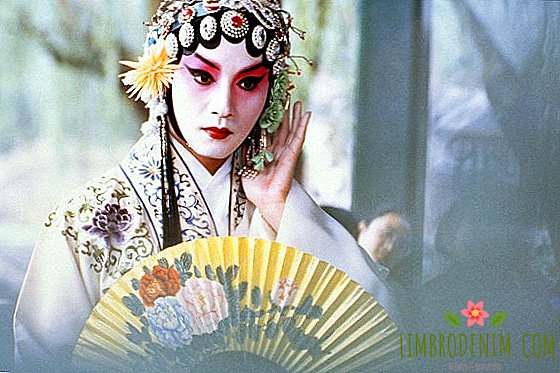


Film "Goodbye my concubine"about the friendship of two male actors who play the concubine and the warrior all their life in the Peking Opera, is good not only by the make-up and theatrical costumes of the main characters, but also by the large number of elegant qipao that are minor heroines.


In the tape "Crouching Tiger, Hidden Dragon"Taiwanese director Ang Lee is in the spotlight for the killer Yu Shulen, nicknamed the Jade fox, who flits in the lightest white suits and jacquard robes.



Style melodrama "Love mood"and"2046“Wong Karvai often inspires designers, such as Alberto Ferretti. And this already says something about something.



Another tape, "The House of Flying Daggers", tells about love, rebels and secrets, and also is one of the most spectacular Chinese paintings - which are worth only dances and costumes of the main heroine Xiang Mei.


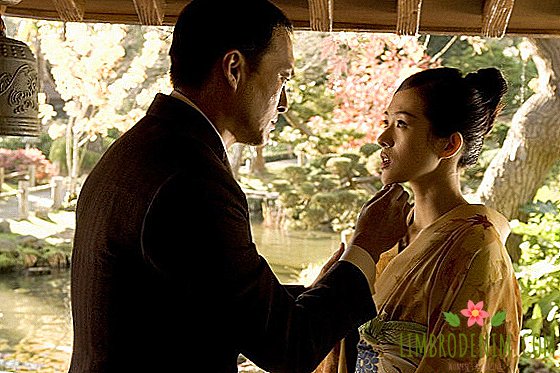
Rob Marshall's Drama "Memoirs of a Geisha"about the difficult fate of geisha Chio Sakamoto is forbidden to be shown in China, there are factual mistakes in her plot, and the kimono and hairstyles of the heroines are not related to the costumes of real geishas - but she is still one of the most famous and revealing films about Asia.



In the picture of Wes Anderson "Train to Darjeeling"The three brothers go to India, where they meet Amaru Karan in a green sari and swim against the background of Indian women in colorful clothes.



Main thing from "Kill Bill"Quentin Tarantino is a yellow suit with black stripes by Uma Thurman, but Lucy Liu also appears in the film in a white kimono and killer in the image of a typical oriental schoolgirl.
Asian things online stores
Dressing up in a kimono, sari or tsipao is possible only for a costume party. An chiffon kimono shirt, draped over a simple white jersey, a top or a skirt with a dragon or velvet loafers with gold embroidery, will help to give an oriental flavor to a casual look. For a cocktail party, a dress with a stand-up collar, short sleeves and a symmetrical print, as well as makeup in the spirit of Asia — black arrows and red lipstick — will suit.
|
|
|
|
|
|
|
|
|
|
|
|



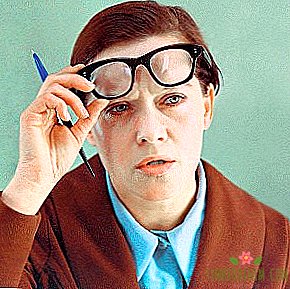




















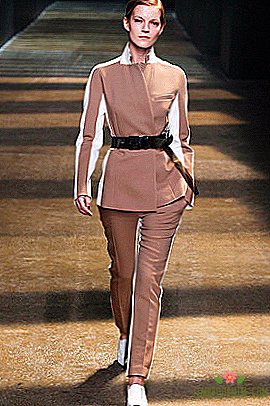




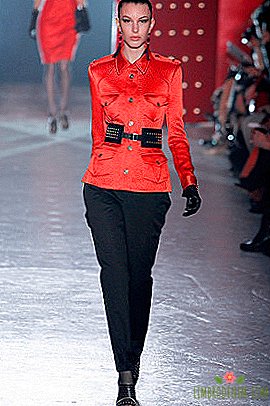

































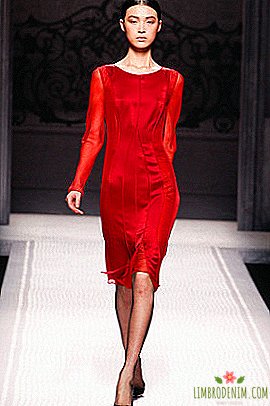























 Earrings Dannijo 420 dollars
Earrings Dannijo 420 dollars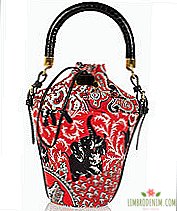 Miu Miu Bag 645 pounds
Miu Miu Bag 645 pounds Clip Asos 1 913 rubles
Clip Asos 1 913 rubles Peter Pilotto Dress 507 pounds
Peter Pilotto Dress 507 pounds Stella McCartney Pants 767 pounds
Stella McCartney Pants 767 pounds Skirt Christopher Kane 7 191 euros
Skirt Christopher Kane 7 191 euros Top Tibi 225 pounds
Top Tibi 225 pounds Coat Dries Van Noten 1500 pounds
Coat Dries Van Noten 1500 pounds Kimono ATHENA PROCOPIOU 296 pounds
Kimono ATHENA PROCOPIOU 296 pounds Marni Skirt 383lbs
Marni Skirt 383lbs Dolce & Gabbana Ankle Boots 416 pounds
Dolce & Gabbana Ankle Boots 416 pounds Skirt Carven 246 pounds
Skirt Carven 246 pounds